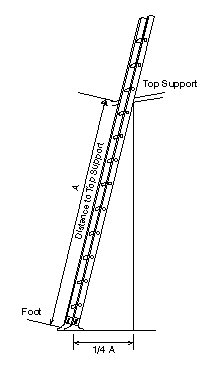|
|
|
美国国家标准学会ANSI认证 |
|
|
|
ANSI背景介绍
 |
|
美国国家标准学会(American National Standard
Institute,ANSI)是美国非营利性民间标准化团体。自愿性标准体系的协调中心。1918年10月19日, 美国材料试验协会(ASTM)、与美国机械工程师协会(ASME)、美国矿业与冶金工程师协会(ASMME)、美国土木工程师协会(ASCE)、美国电气工程师协会(AIEE)等组织,在美国商务部、陆军部和海军部3个政府机构的参与下,共同发起成立了美国工程标准委员会(AESC)。1928年AESC改组为美国标准协会(ASA),1966年8月又改组为美利坚合众国标准学会(USASI),1969年10月6日始改为现名。总部设在纽约。有250多个专业学会、协会、消费者组织以及1000多个公司(包括外国公司)参加。联邦政府机构的代表以个人名义参加其活动。不接受政府的资助。
ANSI经联邦政府授权,作为目愿性标准体系中的协调中心,其主要职能是:协调国内各机构、团体的标准化活动;审核批准美国国家标准;代表美国参加国际标准化活动;提供标准信息咨询服务;与政府机构进行合作。理事会是
ANSI的决策机构,由各大公司、企业、专业团体、研究机构、政府机关的代表组成。理事会休会期间,由执行委员会代行其职能。理事会下设执行标准商议会、标准审查部、国际标准委员会、审计鉴定部、认证委员会、团体会员商议会、公司会员商议会、消费者商议会等业务部门。下设电工、建筑、日用品、机械制造、安全技术等技术委员会。

|
|
|
ANSI标准编制程序
 |
|
美国国家标准学会本身很少制订标准,其ANSI标准的编制遵循自愿公、公开性、透明性、协商一致性的原则主要采取以下三种方式:
1、投票调查法:由有关单位负责草拟,邀请专家或专业团体投票,将结果报ANSI设立的标准评审会审议批准。
2、委员会法:由ANSI的技术委员会和其他机构组织的委员会的代表拟订标准草案,全体委员投票表决,最后由标准评审会审核批准。
3、从各专业学会、协会团体制订的标准中,将其较成熟的,而且对于全国普遍具有重要意义者,经ANSI各技术委员会审核后,提升为国家标准(ANSI)并冠以ANSI标准代号及分类号,但同时保留原专业标准代号。
美国国家标准学会的标准,绝大多数来自各专业标准。另一方面,各专业学会、协会团体也可依据已有的国家标准制订某些产品标准。当然,也可不按国家标准来制订自己的协会标准。目前,经ANSI认可的标准制定机构有180多个,制定的标准总数有 3.7万个,占非政府标准的
75%。其中一小部分经ANSI批准为国家标准。ANSI制定发布的1.1万个标准中,只有1600个是它自行制定的。ANSI于1946年代表美国参加国际标准化组织(ISO)和国际电工委员会(IEC)。 ANSI是泛美技术标准委员会(COPANT)和太平洋地区标准会议(PASC)的积极成员。

|
|
|
ANSI在美国的作用
 |
|
ANSI对产品认证机构、质量体系认证机构、实验室和评审人员进行认可,对质量体系认证和人员资格认可。ANSI评定过程的公正性由大家评议,并将评议意见在ANSI的周刊上发表。同时,建立申诉机制和管理办法,及时处理所有的申诉案例。
ANSI运作机构的特点是广泛与其他机构建立合作关系。ANSI与其他机构合作的项目,除实验室和评审人员的认可外,也有产品认证机构,体系认证机构等的认可,并积极借用其他机构的力量来完成。其合作伙伴及有关信息可在网络上查询。
制定认可政策和认可计划。ANSI代表国家参加相关的国际会议和活动,并代表美国,拟对全世界的信息技术设备建立相互认可关系作出贡献。
ANSI不直接从事产品认证工作。他特别强调通过认证可以提高产品竞争能力,给购买者以信任。同时统一标准,统一技术要求,统一解释,达到对标准和技术要求的一致理解,这是认可的意义所在,也是通过认证带来的非常明显的益处。
|
|
|
ANSI认证产品范围
 |
|
ANSI认证产品的范围包括:
|
工具器具 |
自动起阀装置 |
|
瓶装水和包装的冰 |
建筑产品 |
|
住房及办公家具设备 |
具有二级生态危害的细木设备 |
|
饮用水添加剂及饮用水处理设备 |
电子设备及附件 |
|
电子产品 |
餐具 |
|
天然气设备及附件 |
石油天然气产品 |
|
废水处理 |
制造业产品及娱乐设备 |
|
航海用具 |
个人安全防护设备 |
|
塑料管道系统及配件 |
铅工业产品 |
|
娱乐及职业健康安全与个人保护服装 |
卫生产品 |
|
密封绝缘玻璃 |
太阳能设备 |
|
游泳池,温泉及设备 |
木制品 |
|
废水处理设备配件 |
门窗 |
此外,ANSI还被美国国家标准技术学会(NIST)和美国联邦通信委员会(FCC)认可,授权认证以下产品项目:
无线电频率设备
电话终端设备
2003年,美国国家标准技术学会(NIST)作为加拿大电讯设备标准的美国认证机构。
引自美国国家标准学会2005年1月 |
|
|
ANSI个人防护用品标准介绍(ASNI107...)
 |
|
ANSI/ISEA
107-2004 - American National Standard for
High-Visibility Safety Apparel and Headwear
高能见度安全服装美国国家标准
Description: This standard provides a uniform, authoritative
guide for the design, performance
specifications, and use of high-visibility
and reflective apparel including vests,
jackets, bib/jumpsuit coveralls, trousers
and harnesses. Garments that meet this
standard can be worn 24 hours a day to
provide users with a high level of
conspicuity through the use of combined
fluorescent and retroreflective materials.
Requirement: To comply with ANSI/ISEA 107-2004, a garment's
background material, and retroreflective or
combined-performance material, must be
tested and certified by an independent,
accredited third-party laboratory. The
manufacturer of the finished item then
verifies that the garment or headwear meets
all the requirements of the standard, and
provides a certificate of compliance for for
each model.
ANSI Z87.1-2003 - American National Standard
for Occupational and Educational Eye and
Face Protection Devices
职业性和教学性眼睛和面部防护的方法
Description: ANSI Z87.1-2003, published in August 2003,
establishes performance criteria and testing
requirements for devices used to protect the
eyes and face from injuries from impact,
non-ionizing radiation and chemical exposure
in workplaces and schools. It covers all
types of protective devices, including:
• spectacles (plano and prescription)
• goggles
• faceshields
• welding helmets and handshields
• full facepiece respirators
The standard includes descriptions and general requirements,
as well as criteria for testing, marking,
selection, use and care. Note that it does
not apply to hazardous exposure to
bloodborne pathogens, X-rays, high-energy
particulate radiation, microwaves,
high-frequency radiation, lasers, masers, or
sports.
ANSI Z89.1-2003 - American National Standard
for Industrial Head Protection
工业用头部保护用品
Description: This standard provides performance and testing
requirements for industrial helmets,
commonly known as hard hats. It is a
revision of ANSI Z89.1-1997, which
established the types and classes of
protective helmets, depending on the type of
hazard encountered. It includes
specifications for helmets designed to offer
protection from lateral impact, or top-only
impact, giving employers and users the
flexibility to specify the helmet that best
meets the needs of their specific workplace.
ANSI/ISEA
101-1996 (R2002) - American National
Standard for Limited-Use and Disposable
Coveralls - Size and Labeling Requirements
有限使用和一次性防护服.尺寸和标签要求
ANSI/ISEA 102-1990 (R2003) - American
National Standard for Gas Detector Tubes -
Short Term Type for Toxic Gases and Vapors
in Working Environments
气体检测管.在工作环境中毒气和毒蒸汽的快速检测型
ANSI/ISEA 104-1998 (R2003) - American
National Standard for Air Sampling Devices -
Diffusive Type for Gases and Vapors in
Working Environments
空气抽样装置.工作场所中气体和蒸气的扩散类型
ANSI/ISEA 105-2005 - American National
Standard for Hand Protection Selection
Criteria
手部保护用品选择规范
ANSI Z308.1-2003 - American National
Standard - Minimum Requirements for
Workplace First Aid Kits
工作场所急救工具箱的最低要求
ANSI Z358.1-2004 - American National
Standard for Emergency Eyewash and Shower
Equipment
应急洗眼和淋浴用设备
|
|
|
部分ANSI标准介绍
 |
|
ANSI Z97.1 -
American National Standard For Safety
Glazing Materials Used in Buildings - Safety
Performance Specifications and Methods of
Test
用于建筑的安全玻璃——安全性能规范和试验方法
Scope: In accordance with the scope
determined by the 297 Standards Committee,
this standard establishes the specifications
and methods of test for the safety
properties of safety glazing materials
(glazing materials designed to promote
safety and to reduce or minimize the
likelihood of cutting and piercing injuries
when the glazing materials are broken by
human contact) as used for all building and
architectural purposes.
注:玻璃产品的ANSI Z97.1检测报告可用于申请美国玻璃协会(Safety
Glazing Certification Council)的SGCC认证证书
ANSI A14.2:
2000 - American National Standard For
Ladders - Portable Metal - Safety
Requirements
便携式金属梯的安全要求
Description: These standards detail
specifications on the materials,
construction requirements, test
requirements, usage guidelines and
labeling/marking requirements for portable
ladders. The type of material to be used is
determined by the environment the finished
ladder will encounter (electrical hazards,
temperature extremes, corrosion, outdoor
weathering, etc.). Metal ladders do not have
material guidelines. ladders are generally
evaluated on their resistance to bending,
strength in various positions and the
quality of the individual components that
make up the ladder. |
|
Construction
requirements include weight and size
categories for portable ladders. Usage
guidelines for portable ladders encompass
selecting the proper ladder for the job
being performed; inspecting prior to use to
verify proper operation and cleanliness;
evaluating ladder placement so that footing
and top supports are secure and not creating
a traffic hazard for pedestrians; utilizing
proper climbing technique; and caring for
and storing ladders. Ladders must be marked
with ladder size, type, maximum length,
number of sections (if appropriate), highest
standing level, total length of sections (if
applicable), model number, manufacturer's
name, manufacturer's location, and date of
manufacture. Usage guidelines and other
warning statements must also be placed on
the ladders in specific locations.
|
 |
|
|
ANSI认证表格下载
 |
|
|
|
 |
|
|